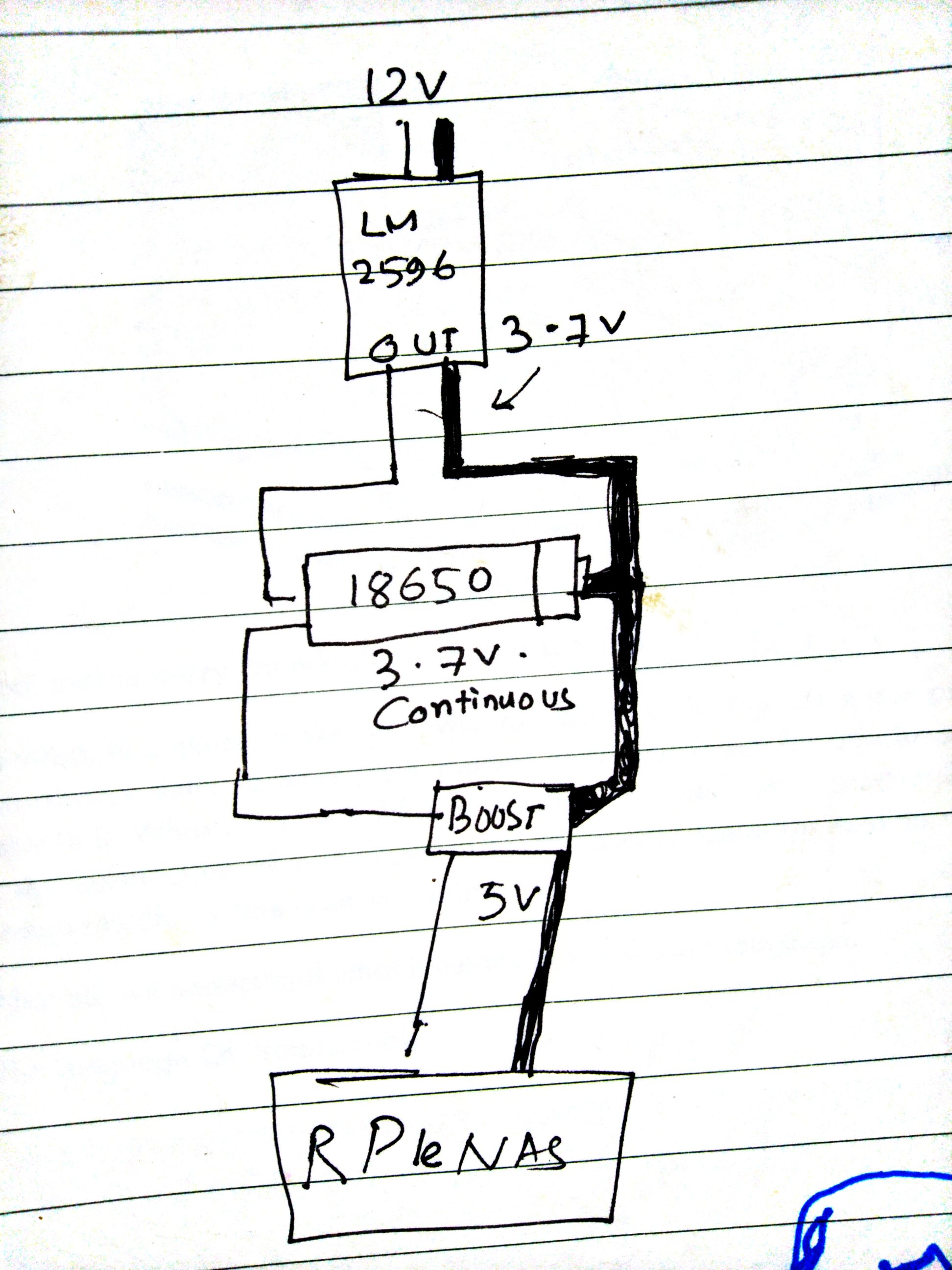I have built a Raspberry Pi NAS and it is powered by a lithium ion-ion battery through a 5V5 V step up-up module - the one used in Powerbankspowerbanks. The battery is a 18650 Li Ion-Ion battery which is kept continuously at 3.7V7 V by an adjusted LM2596 module.
I am not directly powering the Pi through a 5v5 V mobile charger because of two reasons - brownouts and blackouts will cause the NAS to reboot. Second, no cheapishcheap-ish mobile charger's output is free from AC ripples and Y cap-cap leakages, which might shorten the life of the Pi. And it'll be overkill to buy a well constructed-constructed Apple charger that's fairly foolproof.
Now, I was wondering, is it harmful for the lithium ion-ion battery to be kept at 3.7 V? Does it cause continuous trickle charging, that is harmful for Lithiumlithium-ion batteries? Or does the battery take zero current once it's at 3.7V7 V?
The circuit is like this:

 !
!
